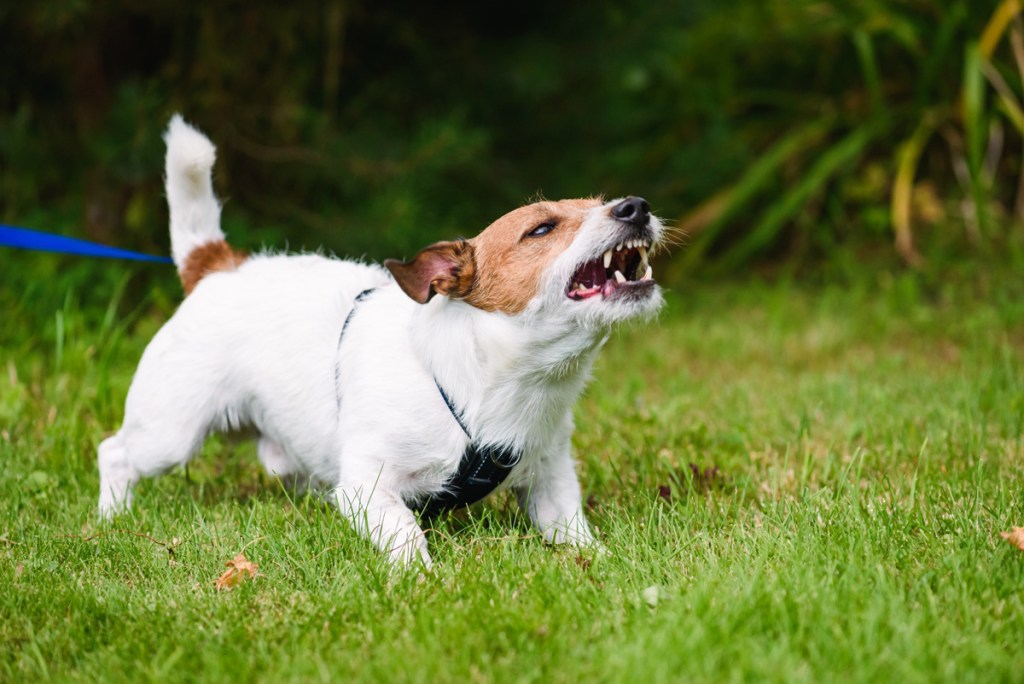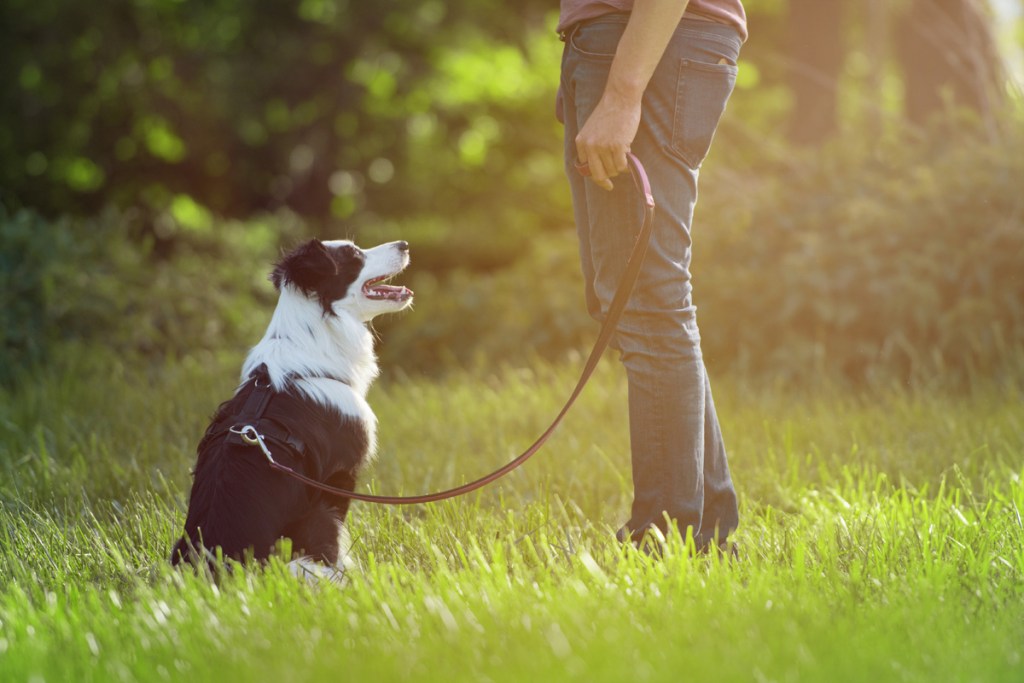Anyone who lives with a reactive dog knows that it can be emotionally draining. You envy people walking with friendly dogs while you’re forced to steer clear because of your unruly companion. It’s embarrassing and stressful, especially when you get dirty looks from other pet parents. The good news is that it doesn’t have to be that way. With the right training tips, you can manage your dog’s reactivity and actually enjoy walking your dog.
According to experts at the American Kennel Club (AKC), reactivity is often confused with aggression. Reactive dogs are not aggressive, although if allowed to get out of control, reactivity can lead to aggressive tendencies. Reactive dogs overreact to certain things or situations. This behavior can be due to genetics and/or lack of proper socialization and is often the result of fear or insecurity. We’ll go over how to train a reactive dog so they are more calm going forward.
Can a reactive dog be trained?
Yes, with the help of a professional you can manage your dog’s reactivity by using behavior modification techniques. Depending on the level of your dog’s reactivity, you may not be able to turn him loose in a dog park, but with time, patience, and consistent training you can take him on peaceful neighborhood walks. According to professional dog trainer Steffi Trott of SpiritDog Training, dogs of any age can start training to improve their reactivity. However, Trott says that pet parents need to understand the longer a dog has been reactive, the longer it will take to change that behavior.

How can I train my reactive dog?
Get professional help
Hire a positive reinforcement trainer to help you train your dog. You can find a list of local trainers through The Association of Professional Dog Trainers. A trainer can help you understand why your dog is acting out, which is an important first step in solving the problem. Positive reinforcement training means focusing on rewarding dogs for appropriate behavior while teaching alternate behaviors in place of inappropriate ones. These techniques help strengthen the dog-owner bond and foster a love of learning in dogs, writes certified dog trainer Stephanie Gibeault in an AKC article.
Choose the right gear
Training experts recommend using a well-designed harness, such as the highly-rated PetSafe Easy Walk Deluxe harness, or a no-pull Halti head collar when working with leash reactive dogs. Both of these give you more control.
Start training at home
Choose a room inside your home without distractions to work on getting your dog’s undivided attention. Keep high-quality treats especially for training purposes. Trott recommends using steak, chicken, or cheese – foods your dog will love. This training involves calling your dog’s name and rewarding him with a treat for looking at you.
Gradually offer more challenging scenarios
Once you have your dog’s attention indoors, you can make things more challenging. For example, Trott recommends asking a friend to visit with their dog. As soon as your dog sees the other dog, get his attention and reward him with a treat. When the other dog is out of sight stop feeding treats. Repeat this as many times as possible. The goal is that your dog begins to associate seeing another dog with a tasty treat.
How do you walk a reactive dog?
Training experts say that leash reactivity is one of the most common behavior problems people have with their dogs. Depending on the level of the reactivity when leashed, these dogs may growl, bark, or lunge toward other dogs or people who pass by.
Being leashed is a cause of frustration for reactive dogs. That’s because walking on a leash and approaching other dogs face-to-face is not natural for dogs, say training experts at the Animal Humane Society in the Twin Cities metro area, MN. From a dog’s perspective, facing one another head-on is a threatening posture, and insecure or scared dogs will act out by lunging and growling. When an owner reacts to this behavior by tightening up on the leash, that makes the dog feel even more trapped and the reactivity escalates. Punishing a dog who is acting out on a leash will also make matters worse. That includes yelling, jerking the leash, grabbing the dog, or repeatedly saying “no.” Instead, when out on a walk, always carry high-quality treats, remain calm, and follow these steps:
- Keep your eyes peeled for your dog’s triggers.
- Start by walking in quiet neighborhoods and cross the street when a trigger approaches to create distance and set your dog up for success.
- Immediately get your dog’s attention and reward him for looking at you.
- Gradually work on getting closer to your dog’s triggers, always rewarding him for not reacting.
- Take a step back if your dog returns to reactivity by creating more distance again. This could be a signal that you’re going too fast.
- If you do have to approach another dog head-on while walking, simply go around him in an arc. Continue working on getting your dog’s attention and offering a reward.

Always be positive
Finally, it’s important to keep things positive when working with a reactive dog. It’s up to you to make sure that other dogs don’t invade your dog’s space and make him feel vulnerable. Remember, every negative experience will set your dog’s progress back, so take it slow and be patient, and eventually, you will be proud to walk your dog around the neighborhood.
Editors' Recommendations
- 5 surefire ways to keep your dog off your bed and get a good night’s sleep
- 7 dog training podcasts we’re obsessed with
- 4 effective ways to house-train your stubborn little Chihuahua
- Video: Dog befriends bike thief (or why golden retrievers shouldn’t be guard dogs)
- Video: Adorable dog thinks the TV wants to play fetch




